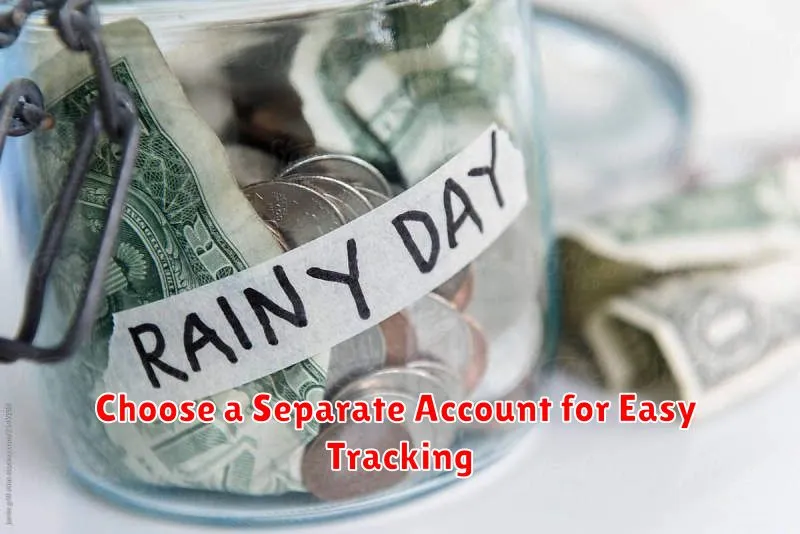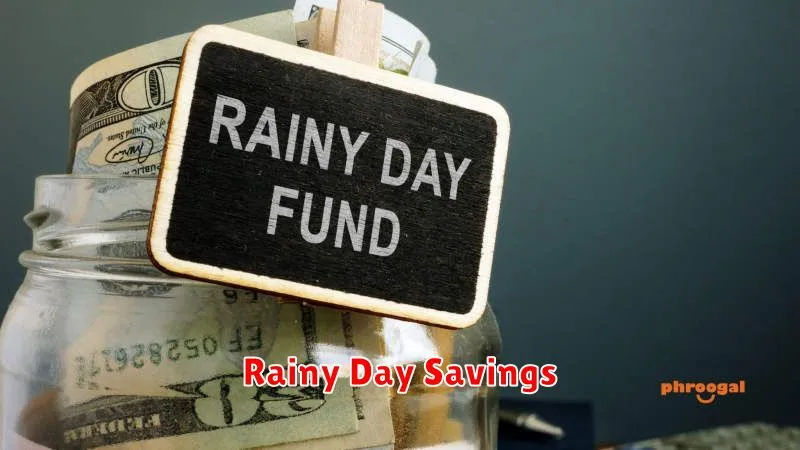In today’s unpredictable financial landscape, cultivating a sense of security and stability is more crucial than ever. Establishing a Rainy Day Fund is an essential step towards achieving that peace of mind. This article will guide you through the process of creating a robust financial cushion, allowing you to be better prepared for unforeseen expenses and to face life’s uncertainties with confidence. Whether you’re an aspiring saver or someone looking to refine their financial strategies, understanding how to effectively set up a Rainy Day Fund is invaluable for protecting your financial future. Read on to discover practical steps, essential tips, and key insights that can help you build a safety net tailored to your needs.
Difference Between Emergency and Rainy Day Funds
Both Emergency Funds and Rainy Day Funds serve as financial safety nets, yet they are not interchangeable. Understanding their distinctions can help in creating a more structured financial plan.
Emergency Funds are larger savings meant for significant, unforeseen events such as losing a job, unexpected medical expenses, or extensive home repairs. These funds are typically recommended to cover three to six months of living expenses, ensuring stability during major financial disruptions.
On the other hand, Rainy Day Funds are smaller, easily accessible savings set aside for minor, unanticipated expenses, like a car repair or a surprise bill. These funds provide quick relief for short-term, smaller-scale financial hiccups without sapping your emergency reserves.
In essence, while Emergency Funds protect against long-term disruption, Rainy Day Funds are designed to handle shorter-term, smaller issues. Both are crucial for achieving overall financial peace of mind.
Decide on a Realistic Target Amount
Creating a rainy day fund is vital for achieving financial stability and peace of mind. However, determining how much to aim for can be challenging. It requires balancing your personal financial situation with potential unforeseen expenses.
Firstly, analyze your monthly expenses. This will give you an idea of how much money you need for basic living costs, including rent, utilities, food, and transportation. A general recommendation is to save up for three to six months of living expenses, which offers a cushion against unexpected events such as medical emergencies or temporary job loss.
Consider your individual circumstances. For example, if you have dependents or work in a volatile industry, you might aim for the higher end of the spectrum. Conversely, if you have a dual-income household and strong job security, a smaller fund might suffice.
It’s essential to set a specific, realistic goal. Start with a smaller, more achievable target and increase it gradually. This approach makes saving more manageable and less daunting.
Lastly, regularly review and adjust your target amount. As your financial situation or obligations change, so should your rainy day fund goal. This flexibility ensures that your fund remains adequate and effective.
Choose a Separate Account for Easy Tracking

When building a rainy day fund, it is crucial to maintain clear and accessible financial management. One effective way to achieve this is by establishing a separate account specifically for your savings. This dedicated account allows you to monitor your fund more efficiently, free from the complexities of everyday financial activities.
By utilizing a specific account for your savings, you can easily track deposits and withdrawals related only to your rainy day fund. This segregation ensures that your emergency savings are clearly distinguished from your regular finances, providing a transparent view of your financial preparedness at any time.
Moreover, having a separate account may also reduce the temptation to dip into your emergency resources for non-emergency expenses. The psychological barrier of accessing a different account can help enforce financial discipline and focus on maintaining the integrity of the fund.
Ultimately, choosing a separate account for your rainy day fund simplifies financial tracking and reinforces the importance of safeguarding your savings for times of genuine need.
Save a Fixed Small Amount Weekly
Creating a rainy day fund can enhance your financial security and provide peace of mind. One effective strategy to build this fund is to save a fixed small amount weekly. This method allows you to steadily accumulate savings without feeling financially strained.
Begin by evaluating your monthly budget to identify an amount you can comfortably set aside each week. Even small contributions can accumulate over time, highlighting the importance of consistency. For instance, saving $10 each week will yield $520 at the end of a year. This manageable habit helps you gradually build a substantial fund without necessitating major lifestyle changes.
Utilize automated transfers to ensure that these savings occur consistently. By treating these weekly contributions as a non-negotiable expense, you reinforce the habit of saving and reduce the temptation to spend the money elsewhere. This disciplined approach ensures your rainy day fund grows steadily, providing a financial cushion for unexpected expenses.
Regularly review and adjust this amount as your financial situation evolves. As your income or financial obligations change, reassessing your weekly savings goal ensures it remains aligned with your capabilities. Over time, this system not only builds your savings but also fosters financial discipline, contributing to a stronger sense of security.
Use Unexpected Money to Boost the Fund
Building a rainy day fund offers valuable peace of mind in times of financial uncertainty. One effective strategy to grow this fund is to capitalize on unexpected money you might receive. This includes windfalls such as bonuses, tax refunds, or small inheritances.
Instead of spending this extra cash on non-essential items, consider directing a significant portion of it towards your fund. This not only helps strengthen your financial cushion but also instills a habit of financial discipline.
Additionally, consider earmarking these unexpected funds for your savings whenever you receive them, effectively transforming the occasional unpredictability of .extra income into reliable savings.
By taking advantage of these funds, you can significantly increase your financial security without altering your regular budget. Taking deliberate action with unexpected money can turn potential setbacks into an opportunity for financial stability and growth.
Avoid Tapping the Fund for Non-Urgent Use
Creating a rainy day fund is a strategic step towards achieving financial peace of mind. However, it is crucial to maintain discipline and avoid using it for non-urgent expenses. The purpose of this fund is to provide a safety net during unforeseen circumstances, ensuring you’re prepared for genuine emergencies.
To preserve the integrity of your fund, clearly define what constitutes an emergency. Typical situations might include job loss, medical emergencies, or unexpected home or car repairs. By setting these boundaries upfront, you establish a framework that helps resist unnecessary temptation.
Another essential aspect is developing strong financial habits. Regularly review your monthly budget and allocate funds for both essential and discretionary expenses. By properly managing your current finances, you minimize the chances of needing to dip into your emergency reserves for routine expenses.
Finally, constantly remind yourself of the long-term benefits the fund offers. The peace of mind that comes from knowing you’re prepared for life’s surprises far outweighs any short-term gratification from spending on non-essential items.
Review and Adjust Goals Bi-Annually
As you embark on the journey of creating a rainy day fund, it’s essential to regularly review and adjust your goals every six months. This practice ensures that your savings strategy remains aligned with your evolving financial landscape.
During these bi-annual reviews, take a close look at your current financial situation, including any changes in income or expenses. Life events, such as a promotion, relocation, or changes in family size, can significantly impact your savings capabilities and objectives.
Additionally, assessing external factors like economic conditions, inflation rates, and market trends can provide insights into how aggressively you should be saving. These factors might necessitate recalibrating your savings goals to safeguard your financial security effectively.
Updating your savings plan every six months allows for flexibility and ensures that your rainy day fund remains a reliable safety net. It strengthens your ability to face unforeseen challenges with increased resilience and bolster your peace of mind.
Label It Clearly in Your Banking App
When setting up a rainy day fund, it’s essential to ensure that it is easily identifiable within your banking app. This visibility helps you to maintain focus and discipline in building your savings.
First, designate a separate savings account specifically for your fund. Most banking apps offer the option to add a nickname or label to each account. Utilize this by selecting a clear and motivating label such as “Rainy Day Fund” or “Emergency Savings.” This label will serve as a constant reminder of your goal each time you log in.
By labeling your account clearly, you’ll be able to track your progress efficiently. It ensures that you remain organized and avoid accidentally using these funds for non-emergencies. A clear label also aids in reinforcing the purpose of the fund, which is to provide peace of mind during unforeseen events.

